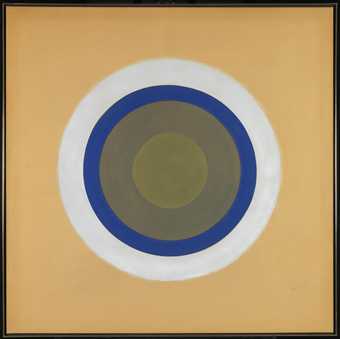
Morris Louis
Alpha-Phi (1961)
Tate

Kenneth Noland
Gift (1961–2)
Tate
© The estate of Kenneth Noland /VAGA, New York/DACS, London 2025
Post-painterly abstraction set abstract painting on a more purely abstract basis than before.
It grew very directly out of the existing traditions of abstract art, synthesising elements from Jackson Pollock, Mark Rothko and Barnett Newman as well as looking to Ad Reinhardt and Ellsworth Kelly, to the late work of Henri Matisse and to the targets and flags of Jasper Johns. However, the post-painterly abstractionists were ruthless in their rejection of the inwardness and mysticism of abstract expressionism and of any residual references to the external world, and they also explored new approaches to composition. What they created was a purely factual kind of art which, more than ever before, functioned in terms of the basic elements of the medium itself; form, colour, texture, scale, composition and so on.
In 1964 an exhibition of thirty-one artists associated with these developments was organised by the critic Clement Greenberg at the Los Angeles County Museum of Art. He titled it Post-Painterly Abstraction. Leading figures were Helen Frankenthaler, Morris Louis and Kenneth Noland.
